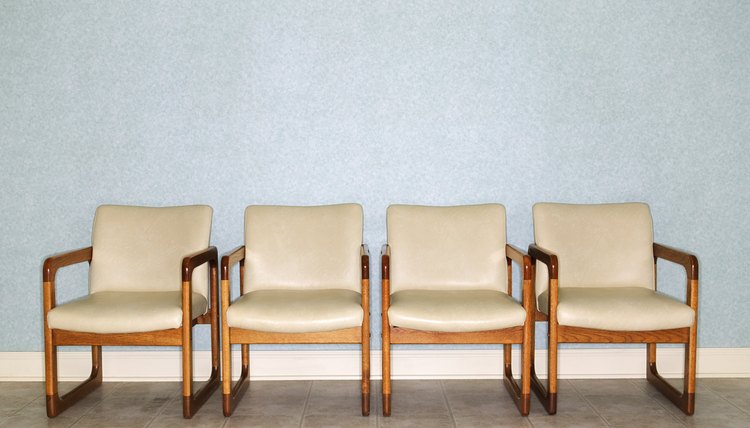A Squat Vs. a Chair Squat

A standard squat and a chair squat share more similarities than differences. They work the same muscle groups -- the quadriceps, hamstrings and glutes -- and they are performed with the same basic technique. The distinguishing feature between these two leg exercises is the safety benefits of the chair squat.
Execution
Stand with your feet about hip-width apart, your toes pointing forward and your arms relaxed by your sides. Engage your abdominal muscles and look straight ahead throughout the movement. Inhale, push your hips back and bend your knees to lower into a squat. Keep your weight back on your heels. When your thighs are about parallel to the floor, exhale, push through your heels and extend your knees and hips to return to the starting position. For improved balance, raise your arms to the front as you lower into the squat.
Execute a chair squat in the same manner but place a chair behind your legs. Stop descending before your glutes come into contact with the seat of the chair.
Benefits
The chair squat exercise has a built-in safety feature. If you lose your balance or cannot stand up out of the squat, you can sit down in the chair. This minimizes your risk of falling and injuring yourself. Chair squats are beneficial for beginner exercisers, those learning proper squatting technique and those with conditions that may affect balance or coordination.
Technique
The chair squat is an excellent tool for learning proper squatting technique. Using a chair teaches you to "sit back in the squat," which is called the hip hinge technique. According to an article in the December 2009 issue of the "Strength and Conditioning Journal" of the National Strength and Conditioning Association, sitting back during the squat exercise reduces undue stress on the knees and helps keep the spine in a neutral position.
Considerations
Start with your body weight as the resistance for the standard squat and the chair squat. As you become stronger, add more resistance to the standard squat by holding dumbbells or a barbell. Although light resistance can be added to increase the difficulty of the chair squat, if you are comfortable enough to use medium to heavy resistance for the squat exercise, you can perform the movement without a chair. Chair squats are not appropriate for advanced lifters who need to add significant weight to the exercise to challenge their muscles.
References
Writer Bio
Based in Austin, Texas, Jolie Johnson has been in the fitness industry for over 12 years and has been writing fitness-related articles since 2008 for various websites. She received her Bachelor of Arts in English and philosophy from the University of Illinois.
